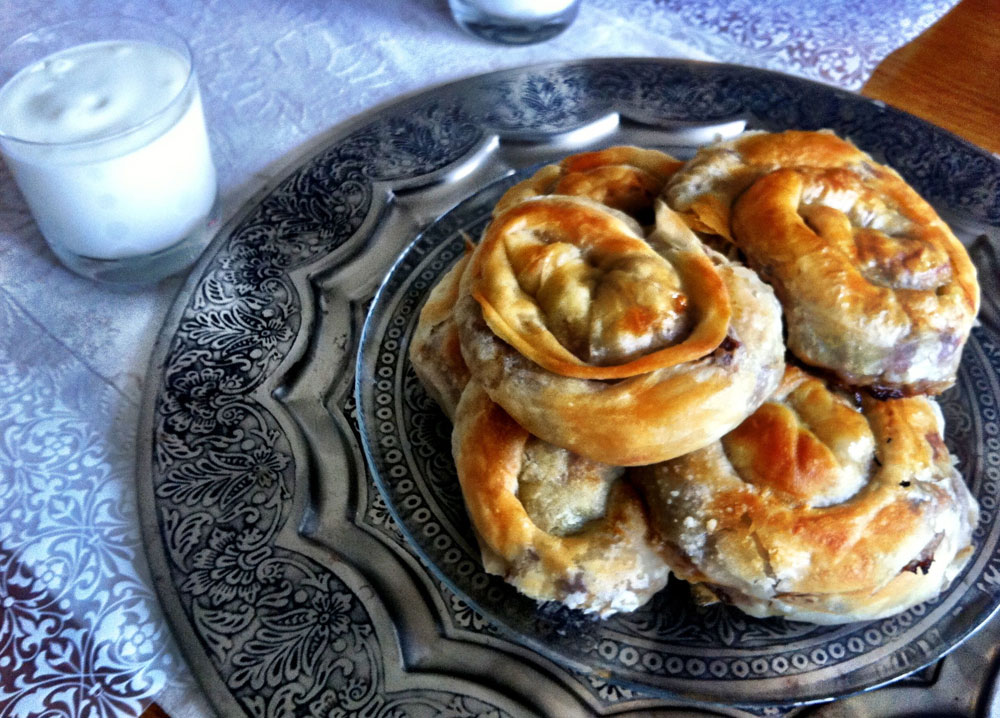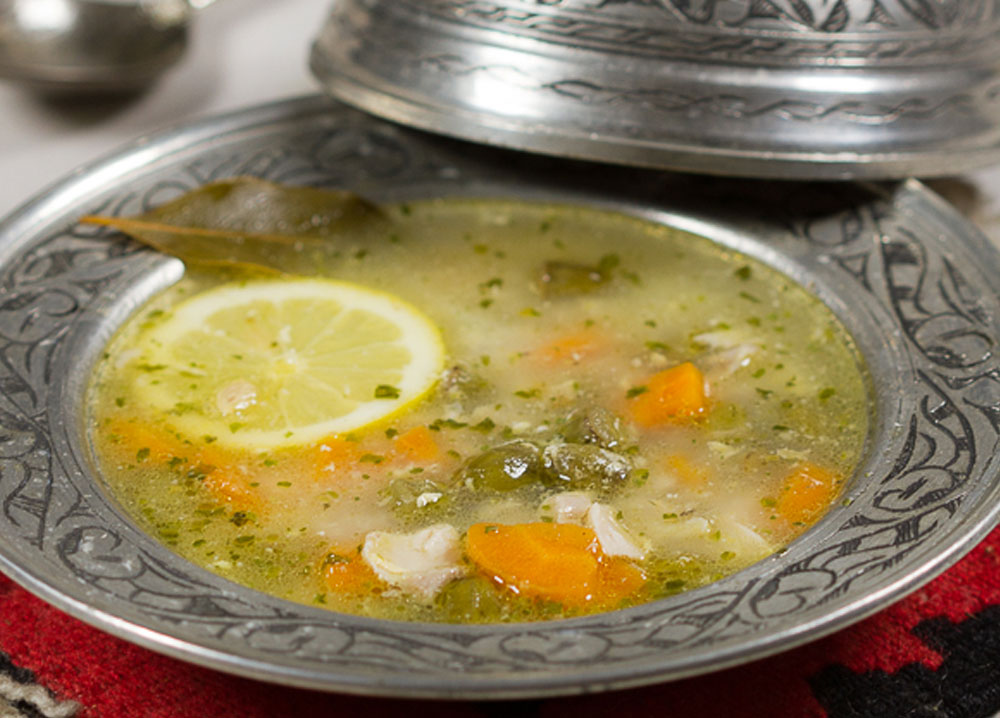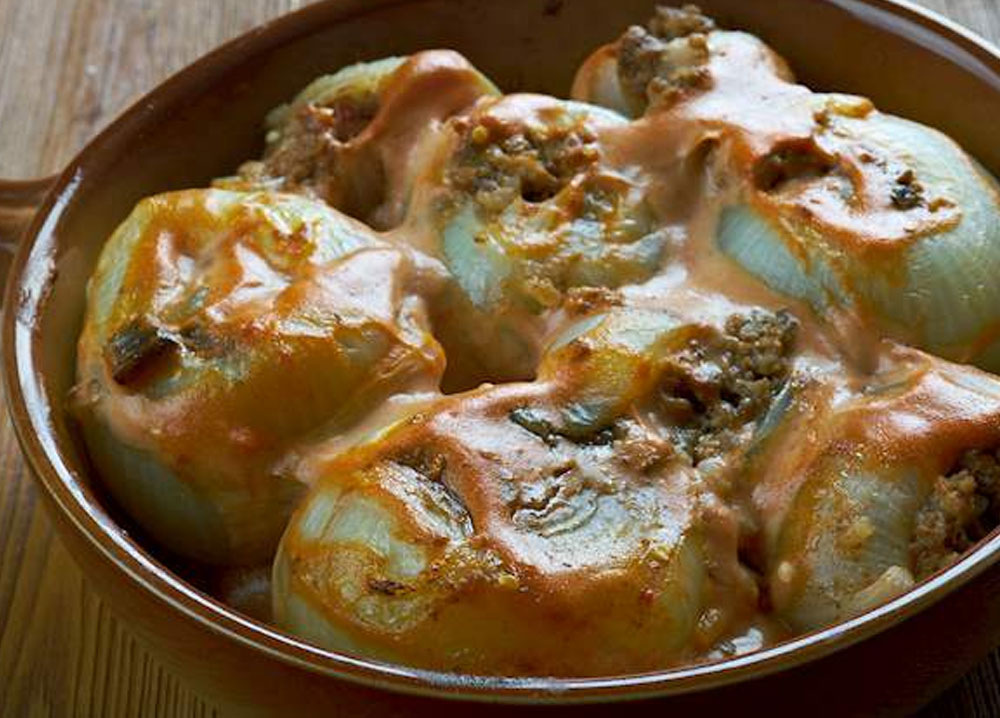Trying Bosnian Cuisine at Home

Bosnian cuisine is one of the most delicious and exciting in Eastern Europe with influences from the Ottomans, the Mediterranean and Central Europe. Bosnia and Herzegovina has historically been a meeting point between different nationalities, cultures, and religions from the east and the west. Food here has many flavours coloured by Turkish, Arabic, Austro-Hungarian, Greek, Muslim, Catholic, and Jewish influences in the local dishes.
And although Bosnia is often believed to be a meat loving country, there are plenty of vegetables that go with most of their food.
What truly sets Bosnian cuisine apart from many others is the lack of sauces – food is instead slowly cooked in its own natural juices which lets the flavor of each individual ingredient shine through.
We’ve put together our three favourite Bosnian dishes that you can make at home yourself, bringing a little bit of Bosnia and Herzegovina to your home as well.
Koštani apetit (or Bon Appetit)!

Burek: Iconic Slavic Dish
Burek is an integral part of Slavic cuisine. Burek originated in Central Asia. Then it was adopted by the Ottoman Turks and spread through their military empire. Other variations of burek exist in North Africa, namely in Tunisia and Algeria.
The most common burek is with meat (lamb is usually the choice) with onions, or feta and spinach. These are the fillings found most in the Slavic cuisine of Bosnia, Serbia, Montenegro, Macedonia and Croatia. But your filling doesn’t have to be meat or even savoury. Some travelers experiment with potatoes or cheese and spinach, others even use apples. You go bananas with your Burek! /p>
Ingredients:
Filling: 2 tbsp extra virgin olive oil, 1 medium onion finely chopped, 2 garlic cloves chopped, 500 gms – 1 lb ground beef or lamb, tbsp fresh parsley finely chopped, ½ tsp salt, ½ tsp freshly ground pepper, ¾ tbsp sweet paprika.
Burek: 1 package filo pastry, 50 gms – ¼ cup butter melted, 1 tbsp sesame seeds, 1 egg lightly beaten + 1 tsp water and one plain yogurt to serve.
How to make it?
Filling:
- Heat the extra virgin olive oil in a large pan. Add the chopped onion and garlic and sauté them for a couple of minutes. Then add the ground meat and cook over medium heat until the meat is browned. Add salt, pepper and sweet paprika and mix well.
- When ready, add the chopped parsley. Drain and discard the excess liquid and set aside.
Burek:
- Line a large baking sheet with baking paper.
- On a clean, dry surface, lay out three sheets of filo pastry, end to end, slightly overlapping, to create one long rectangle of pastry.
- Repeat once more, directly over the first layer. Complete this process one last time to create a third and final layer.
- Brush the filo with melted butter. Arrange the meat mixture in a long line across one long edge of the filo dough and begin to roll it up, tightly but gently. The filo may crack, but keep going. Roll the filo up so that it forms a long “snake” shape.
- Roll the tube of filo up on itself to form a spiral disc shape. Place the spiral onto the lined baking sheet.
- Bake in a pre-heated oven at 190°C – 375°F for 20-30 minutes, or until the dough is golden brown.
- Serve with some yogurt on the side.

Begova Corba: Celebrative Soup of Bosnia
This delicious dish is a Bosnian chicken soup that is traditionally served as a warm appetizer. The main ingredients are chicken and okra, which is said to act as an aphrodisiac, but there are also various root vegetables in it, often thickened with sour cream and eggs.
Begova corba is typically prepared for national holidays and festive occasions, but it is also a staple of traditional Bosnian restaurants. Spice up your home cooking a little!
Ingredients:
2 chicken leg quarters, 2 carrots (large, diced), 1–2 celery sticks (or 1 celery root, 1/2 bunch parsley, 1/2 tsp ground pepper, 1 handful okra (cut into rounds if it’s not Balkan okra), 1 tsp seasoned salt, 2 tbsp flour, (Optional) 1 egg yolk, (Optional) 1 teaspoon sour cream.
How to make it?
- Prep okra ahead of time by boiling it in water and lemon juice for an hour or soaking it in the same.
- Place the chicken, carrots, celery sticks (root), 1/4 bunch parsley, okra, salt and pepper in a pot, cover with 6-7 cups of water, and cook on high heat until it boils. Lower to medium heat and cook for another 70-80 minutes. Occasionally replenish with (warm) water so that the level of water is about the same throughout cooking.
- Take the chicken, celery, and parsley out. Remove chicken skin and bones, dice the meat, and then return it to the pot. (You can also take the carrot out and cut it up into even smaller pieces, or mush it up and return to the liquid.)
- Place the flour and some water in a smaller cup, then mix well so there are no bubbles. Add the mix to the soup so that it thickens it. Let it simmer on high for 5-10 minutes.
- Dice the remaining, fresh parsley and also add to soup.
- (Optional) Mix egg yolk and sour cream in a cup, and then pour into the soup, and simmer another 5 min.

Sogan-dolma:
Though its name stems from the Turkish soğan dolması, which translates as stuffed onions, this dish is a big part of traditional Bosnian cuisine. It’s relatively easy to make at home. And it will certainly be a unique food offering in many Australian homes.
Sogan-dolma consists of onion bulbs that are blanched and stuffed with a flavorful combination of minced meat, various spices, and (optionally) grated carrots.
When stuffed, the bulbs are layered and slowly cooked in the oven, usually in a small amount of water. The dish is best enjoyed with an additional scoop of sour cream or yogurt, lemon wedges, and country-style bread.
Ingredients:
5–6 white onions, peeled and cut in half, 400 grams minced lamb, 150 grams cooked rice (brown, white or wild), barley or faro, 200 ml water, approximately, salt and black pepper to taste, 1 tablespoon oil, 1 or 2 tablespoons sweet paprika.
How to make it?
- Place the whole, peeled onions in a large saucepan and cover with water. Cook until soft but not falling apart, about 15 minutes, and save the cooking water for later.
- When cooked, remove the onions from the water, drain them and leave them to cool completely so that you can separate them into rings while being careful not to break them! Set aside the larger rings and finely chop the smaller, inside rings.
- Add the oil or ghee to a frying pan on medium heat. Add the chopped onion, the minced lamb, and salt and pepper to taste. Stir continuously for a few minutes until the meat starts to brown. It doesn’t need to be completely cooked through as it will continue cooking in the oven.
- Preheat the oven to 360F/180C.
- Combine the cooked rice with the browned meat; this is the stuffing for the onions. Use a spoon to stuff each onion ring with this mixture.
- Arrange the onions in the pan that you’re going to bake them in, ideally a cast iron one. Take the onion cooking water that you had previously set aside, and pour it over the onions until they’re half-way covered in water. Cover the pan with a lid or with foil.
- Bake for about 30 minutes, then remove the lid and broil until the onions are nicely colored on the edges.
Mmmmm Ukusno (or delicious)!!!
If you’d like more information regarding Food Tours, please don’t hesitate to contact our team on 1800 242 353.
